Common Breaststroke Mistakes: Part Three
Analysis by Joszef Nagy
Editor's note: Part three of a five-part series exclusively on SwimmingWorld.com examines the many mistakes swimmers can make in the breaststroke pull. These observations were made by renowned breaststroke coach Joszef Nagy.
To view part one, Click here.
To view part two, click here.
VANCOUVER, British Columbia, June 6. TODAY'S analysis focuses on the breaststroke pull. If you thought there were lots of mistakes to be found in the kick, wait until you read about the pull!
1. The pull does not start with perfectly straight arms. (see photo 17)
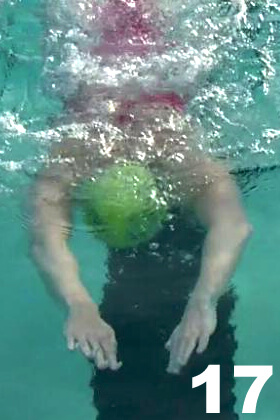
2. While opening the arms, the palms are not turning out in the direction of the pull.
3. The pull is started by pulling down instead of flat and out to the side. (see photos 18 and 19)
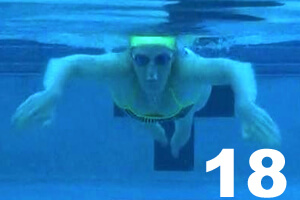
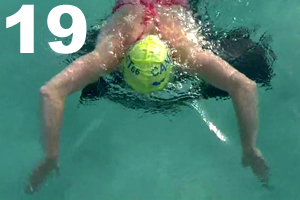
4. The wrists are leading the pull, instead of the fingers in a flat plane. (see photo 20)
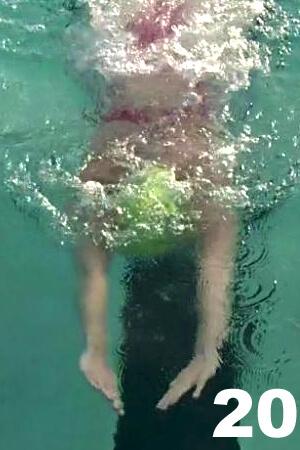
5. The fingers are not parallel with the wrists. They are leading the pull with a broken wrist plane. (see photo 21)
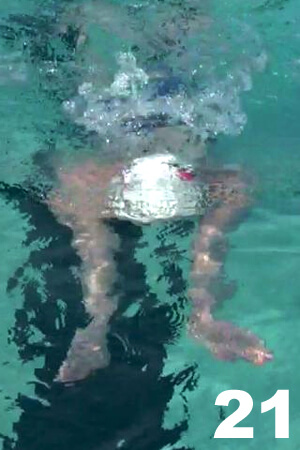
6. The elbows are bent too early. (see photo 22)
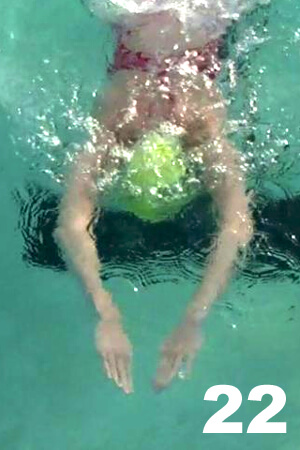
7. The pull is used for upward motions instead of moving forward. (see photo 23)
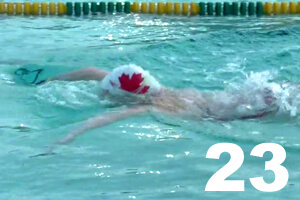
8. When the insweep begins, the palms are not turning to the direction of the insweep. (see photo 24)
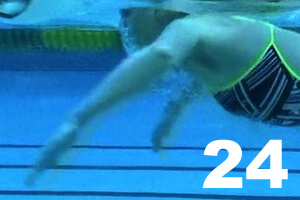
9. During the insweep, the wrists break and the palms face backward instead of down. (see photo 25)
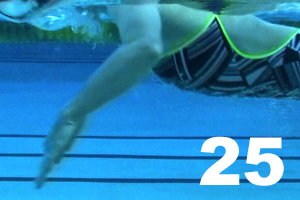
10. In the insweep, the elbows are left out too wide instead of following on the same plane as the forearms. (see photo 26)
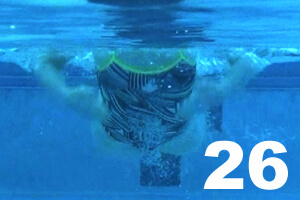
11. When the insweep has finished, the elbows are too far behind the body. (see photo 27)
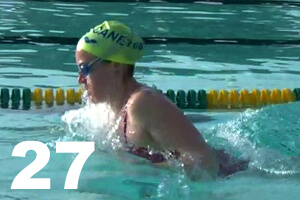
12. When the hands are shooting forward, the elbows are much wider than the hands. (see photo 28)
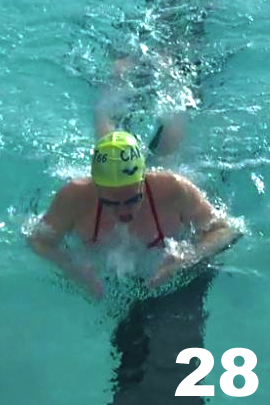
13. When the hands are moving forward, the elbows are much deeper than the hands. (see photo 29)
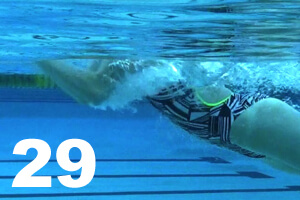
14. When the hands are moving forward, they are shooting down in the water too deep, instead of riding on the surface. (see photo 30)
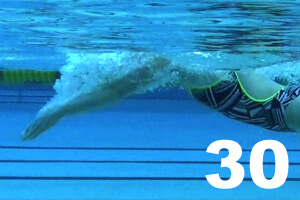
15. When the hands are moving forward, the palms are not facing down. (see photo 31)
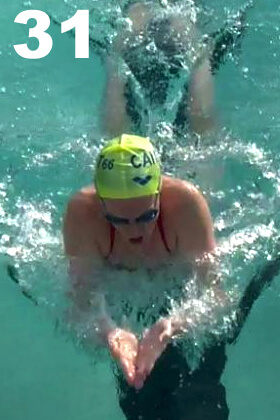
16. During the pull, the fingers are not together, including the thumb. (see photo 32)
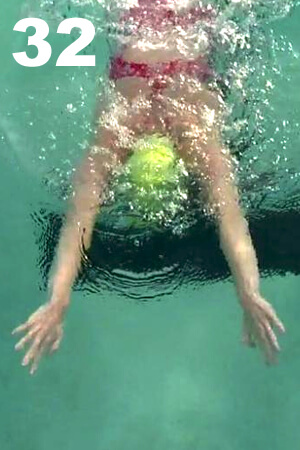
17. When the hands are moving forward, they are not close enough together. (see photo 33)
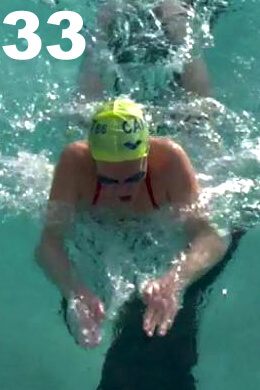
18. When the pull is finished, the arms are not in a streamlined position. (see photos 34 and 35)
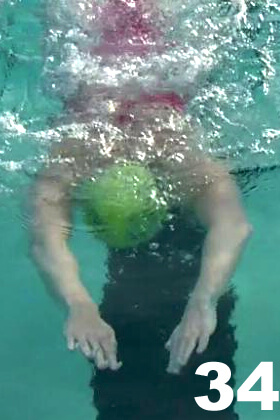
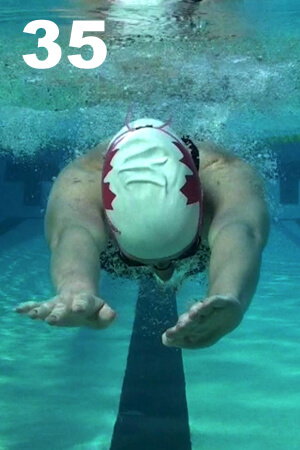
19. When the pull is finished, the hands are not in a solid and balanced position.
20. When the next stroke is about to begin, the shoulders and arms are not extended further for maximum catch.
It is hard here to choose the most dramatic mistake, but I think I will stick to bringing the elbows too far back. This means that when the swimmer is finishing the pull and the hands are turning into recovery, the elbows are behind the shoulders.
And here, many commit the mistake of sticking the elbows to the torso and therefore pulling the elbows toward the back. When the pull is finished and the swimmer is turning into the recovery, the shoulders should lift up to the ears, and the elbows should be positioned near and in front of the chest. Imagine what difference it is in distance if the elbow starts recovery all the way from the back or simply from the chest. And do not forget that this causes very bad body position and much resistance.
Let me emphasize here one more mistake that is not a big one, but probably the most common. I consider it a mistake when the palms are not facing downwards during recovery. Swimmers do different hand positions here. Some swim with palms facing upwards, some with palms facing each other and whatever we are able to imagine — even the combination of these with the two hands. Most coaches and swimmers do not consider it a mistake and not even important. But just think about it: The surface of the palms ensure at least half of the swimming speed (even more in other strokes). Then, this surface is big enough to help/support the swimmer's shoulders (the widest and biggest resistance-producing body part) to move forward above the water and drop back later when the body is almost in streamline.
Tomorrow: Common underwater pull and head position mistakes
Photos courtesy Eva and Joszef Nagy.
Joszef Nagy coached Olympic medalists Sergio Lopez (1988, 200 breast bronze) and Mike Barrowman (1992, 200 breast gold), among others. He was the pioneer of the wave breaststroke in the 1980s, which gained immense popularity in his native Hungary before spreading around the world. Nagy is the head coach at the National Swimming Centre in Vancouver, where Olympians Tera van Beilen and Martha McCabe train, as well as 200 breast world record holder Annamay Pierse.



